Abstract
Patients with thyroid diseases from areas of endemic goitre in Northern Italy were examined for thyroid antibodies by passive haemoagglutination. Of 40 schoolboys with goitre only one had thyroid antibodies (AT) in the blood. Among 182 adults with grade 1-2 goitre, examined within an area of low endemia, the frequency of AT was 7%, not significantly different from that found in the 286 persons with thyroid 'O' living in the same area. Among 181 adults with grade 2-3 goitre, examined within an area of serious endemia, the frequency of AT was 16%; the percentage went up to 24% in 144 patients operated on for goitre. AT frequency was 36% in 87 patients with toxic goitre, more than 70% in 97 patients with Graves' disease and 17% in 60 patients with cancer of the thyroid. AT occurred three times more frequently in women than in men. Microsomal antibodies were more frequently detected than anti-thyroglobulin antibodies: the opposite was true in thyroid cancer. Lymphocytic infiltration (IL) of the gland was observed in 45% of the 464 simple goitres and in 52% of the 60 cancers of the thyroid: it was more frequent and intense in women. Among the 144 patients operated on for goitre the frequency and the titre of AT progressed in parallel with the intensity of the lymphocytic infiltration. Patients with a greater lymphocytic infiltration and higher AT had a higher TSH. Multinodular non-toxic goitre and autoimmune lymphocytic thyroiditis can be present in the same thyroid gland and the clinical expression will depend on which condition predominates.
Full text
PDF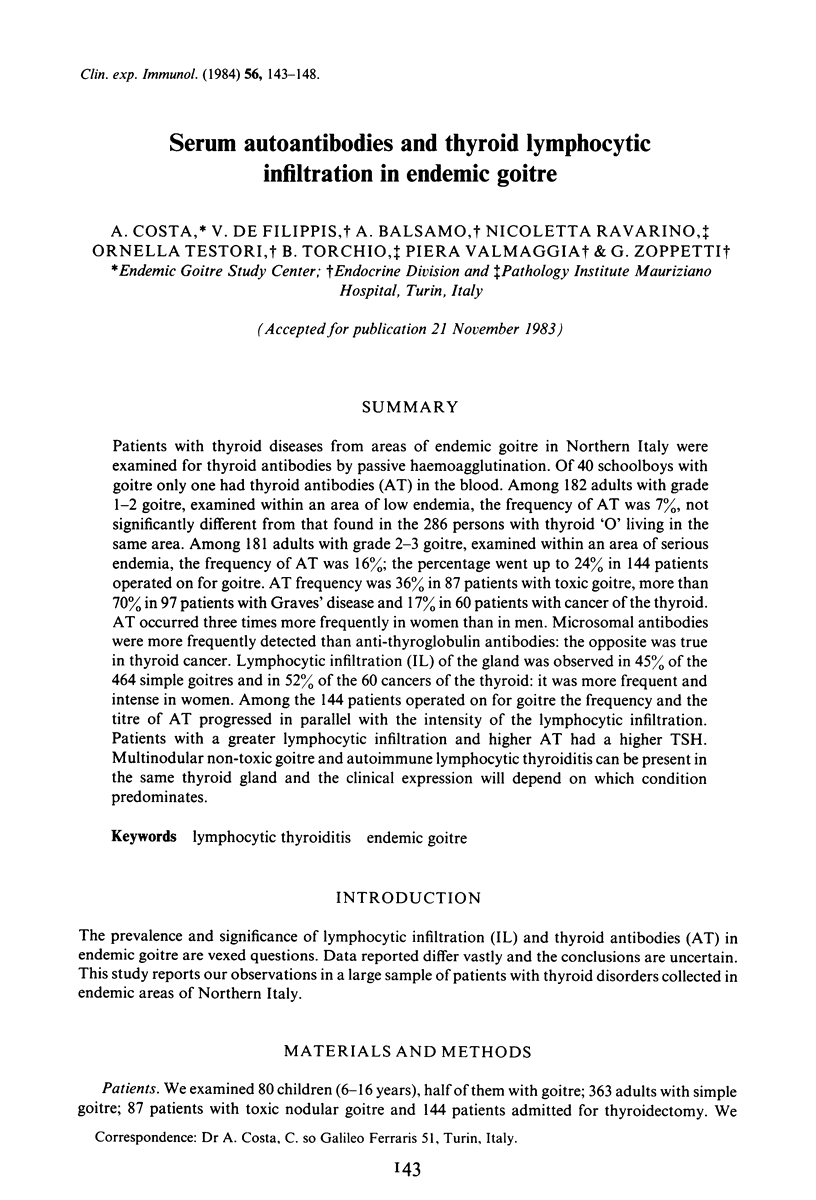
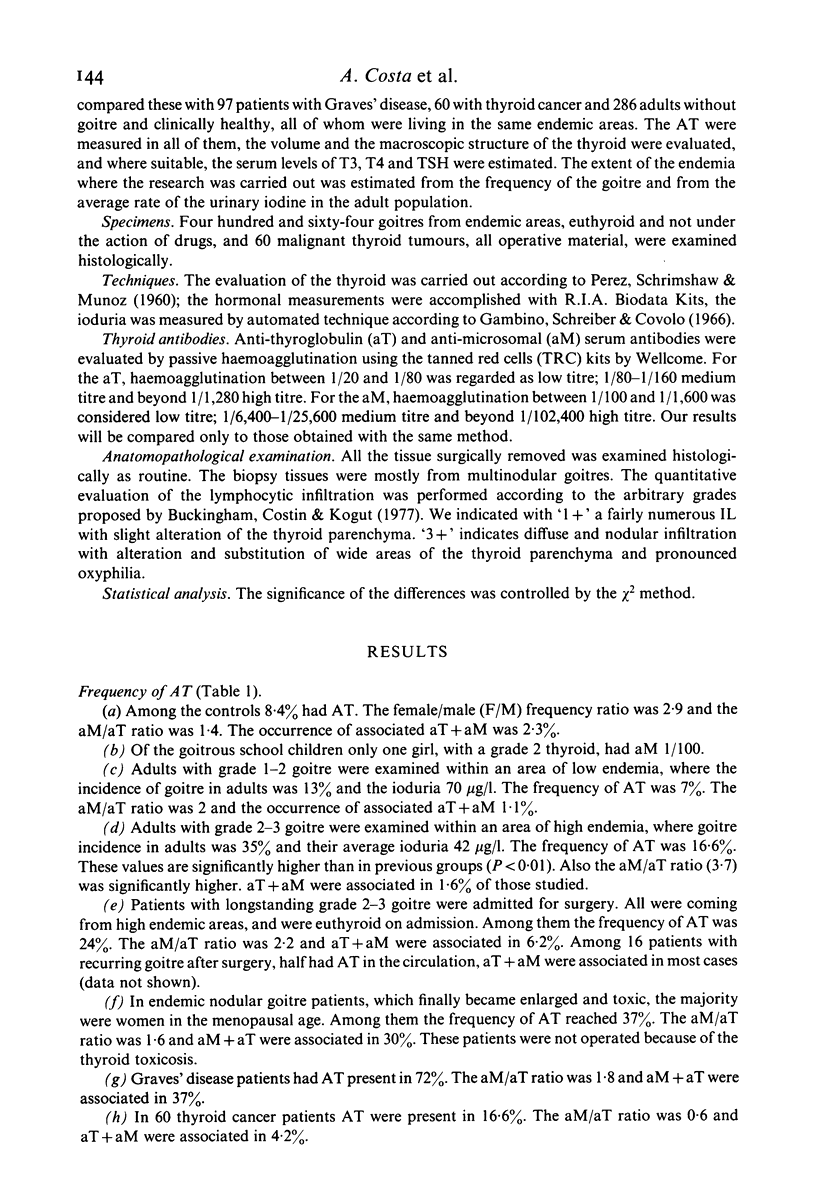
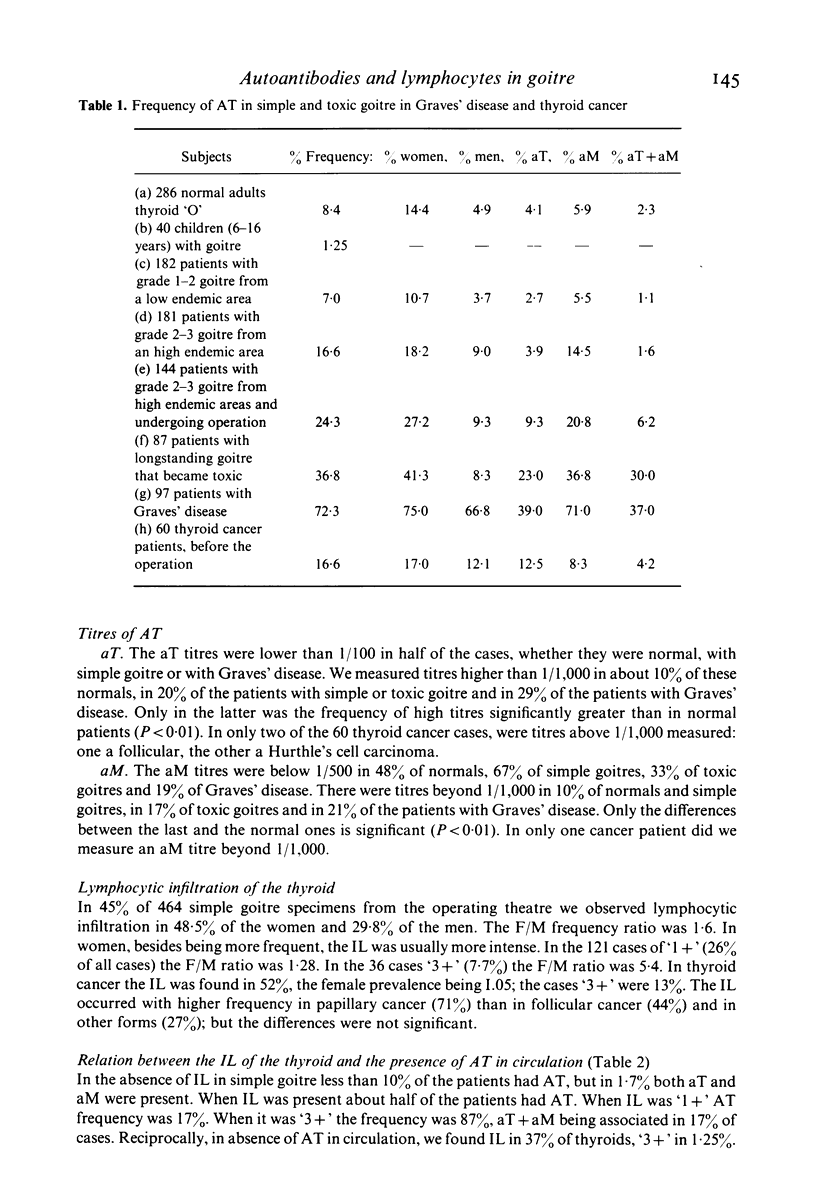
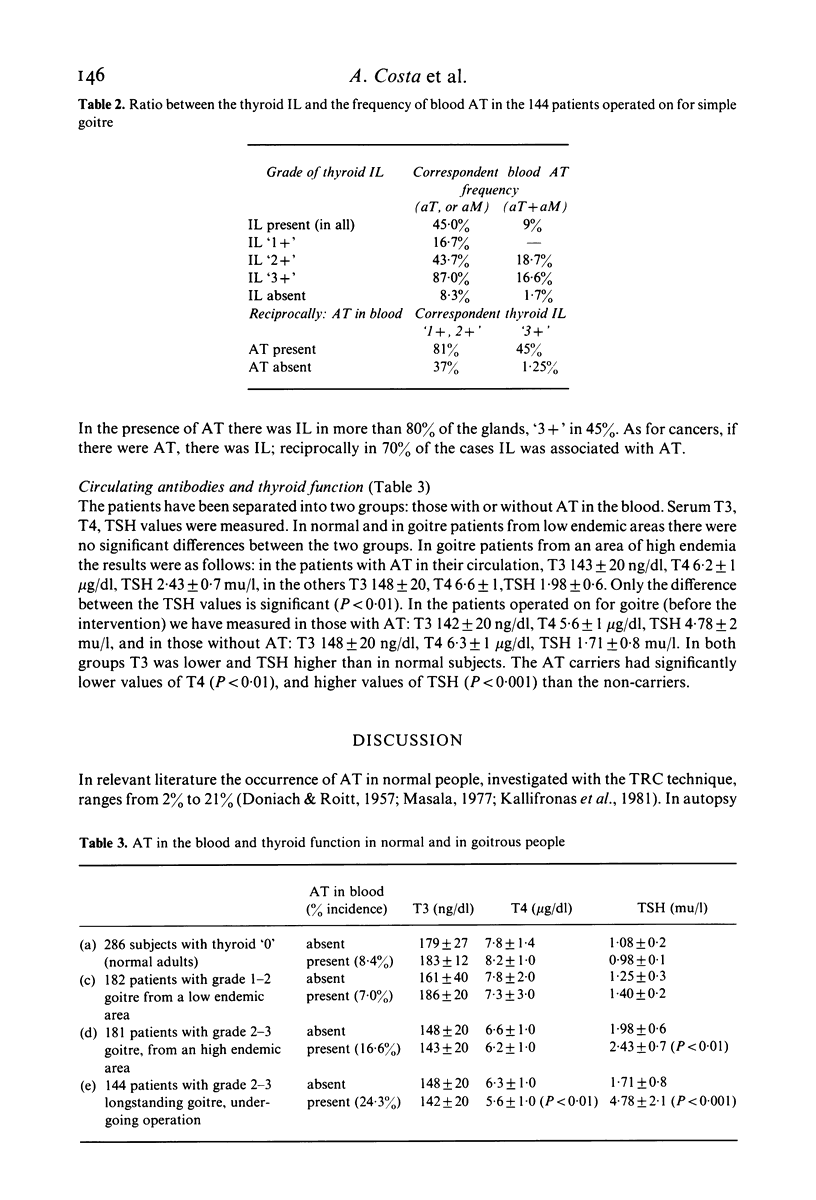
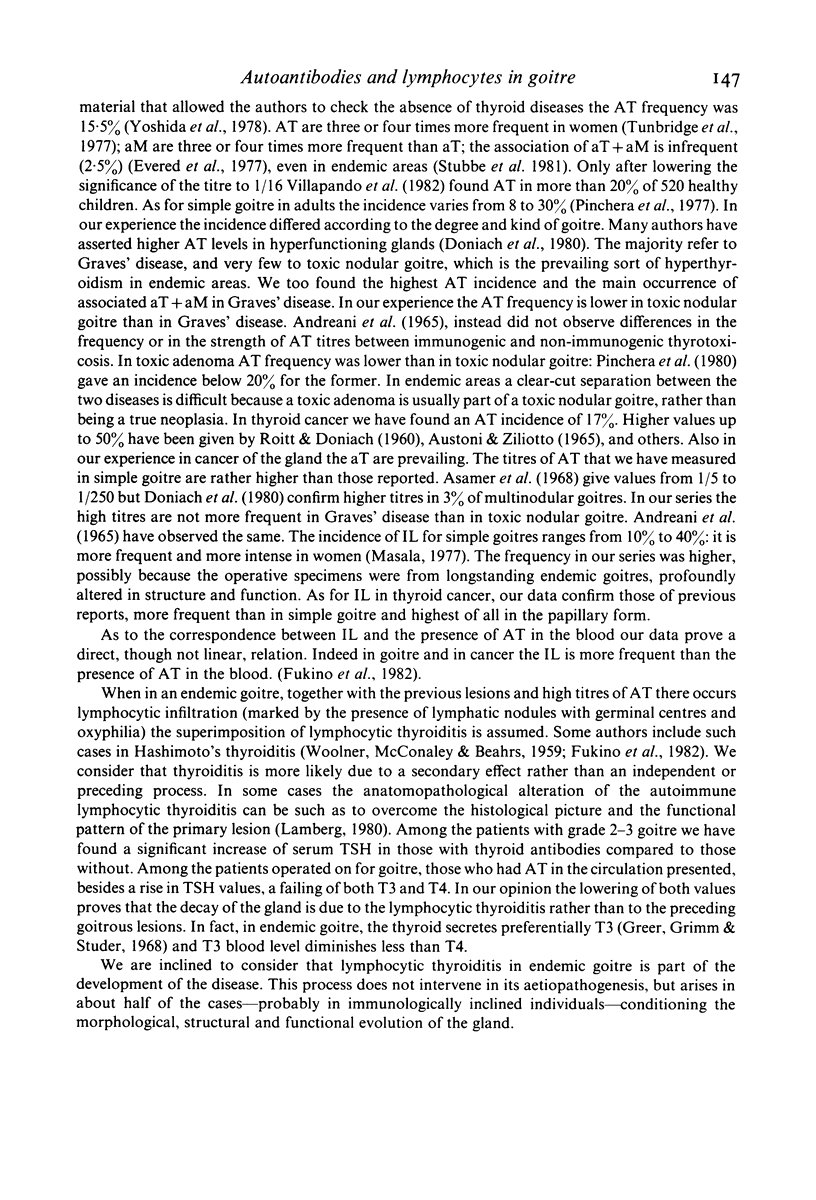
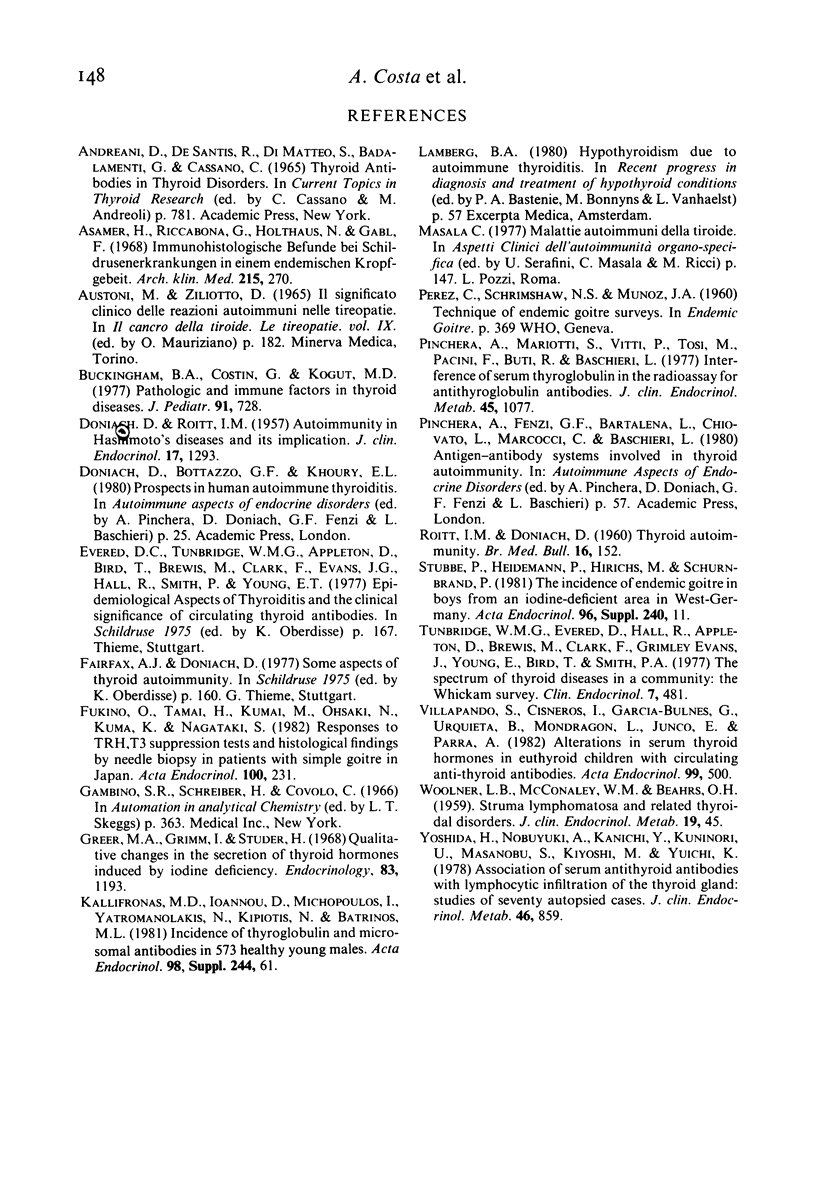
Selected References
These references are in PubMed. This may not be the complete list of references from this article.
- Asamer H., Riccabona G., Holthaus N., Gabl F. Immunhistologische Befunde bei Schilddrüsenerkrankungen in einer endemischen Kropfebiet. Arch Klin Med. 1968;215(3):270–284. [PubMed] [Google Scholar]
- Buckingham B. A., Costin G., Kogut M. D., Isaacs H., Landing B. H. Pathologic and immune factors in thyroid disease. J Pediatr. 1977 Nov;91(5):728–733. doi: 10.1016/s0022-3476(77)81024-x. [DOI] [PubMed] [Google Scholar]
- Fukino O., Tamai H., Kumai M., Ohsako N., Kuma K., Nagataki S. Responses to TRH, T3 suppression tests and histological findings by needle biopsy in patients with simple goitre in Japan. Acta Endocrinol (Copenh) 1982 Jun;100(2):231–236. doi: 10.1530/acta.0.1000231. [DOI] [PubMed] [Google Scholar]
- Greer M. A., Grimm Y., Studer H. Qualitative changes in the secretion of thyroid hormones induced by iodine deficiency. Endocrinology. 1968 Dec;83(6):1193–1198. doi: 10.1210/endo-83-6-1193. [DOI] [PubMed] [Google Scholar]
- PEREZ C., SCRIMSHAW N. S., MUNOZ J. A. Technique of endemic goitre surveys. Monogr Ser World Health Organ. 1960;44:369–383. [PubMed] [Google Scholar]
- Pinchera A., Mariotti S., Vitti P., Tosi M., Grasso L., Pacini F., Buti R., Baschieri L. Interference of serum thyroglobulin in the radioassay for serum antithyroglobulin antibodies. J Clin Endocrinol Metab. 1977 Nov;45(5):1077–1088. doi: 10.1210/jcem-45-5-1077. [DOI] [PubMed] [Google Scholar]
- ROITT I. M., DONIACH D. Thyroid auto-immunity. Br Med Bull. 1960 May;16:152–158. doi: 10.1093/oxfordjournals.bmb.a069816. [DOI] [PubMed] [Google Scholar]
- Tunbridge W. M., Evered D. C., Hall R., Appleton D., Brewis M., Clark F., Evans J. G., Young E., Bird T., Smith P. A. The spectrum of thyroid disease in a community: the Whickham survey. Clin Endocrinol (Oxf) 1977 Dec;7(6):481–493. doi: 10.1111/j.1365-2265.1977.tb01340.x. [DOI] [PubMed] [Google Scholar]
- Villalpando S., Cisneros I., García-Bulnes G., Urquieta B., Mondragón L., Junco E., Parra A. Alterations in serum thyroid hormones in euthyroid children with circulating anti-thyroid antibodies. Acta Endocrinol (Copenh) 1982 Apr;99(4):500–507. doi: 10.1530/acta.0.0990500. [DOI] [PubMed] [Google Scholar]
- Yoshida H., Amino N., Yagawa K., Uemura K., Satoh M., Miyai K., Kumahara Y. Association of serum antithyroid antibodies with lymphocytic infiltration of the thyroid gland: studies of seventy autopsied cases. J Clin Endocrinol Metab. 1978 Jun;46(6):859–862. doi: 10.1210/jcem-46-6-859. [DOI] [PubMed] [Google Scholar]


